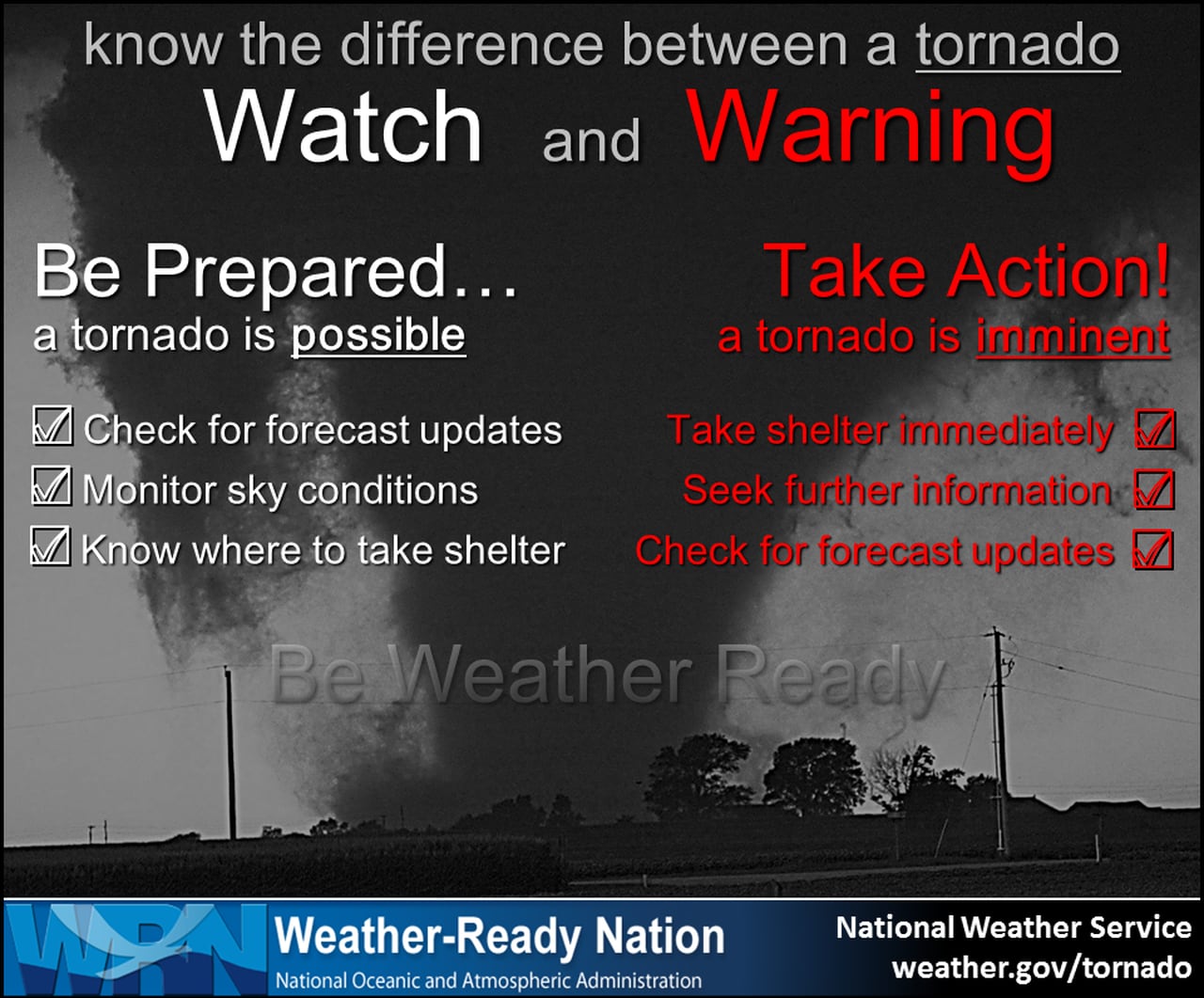As spring rolls around, many people in tornado-prone areas begin to pay closer attention to weather forecasts. That’s when terms like “tornado watch” start to come up. But what exactly does a tornado watch mean? How does it differ from a tornado warning? In this article, we’ll take a closer look at tornado watches and break down what they mean and how to stay safe during one.
**What is a Tornado Watch?**
A tornado watch is a type of alert issued by the National Weather Service (NWS) when weather conditions are favorable for the formation of tornadoes. It covers a large geographic area and usually lasts for several hours. The purpose of a tornado watch is to alert the public and emergency management agencies to the possibility of tornadoes so that they can prepare accordingly.
**Understanding the Difference: Tornado Watch vs. Tornado Warning**
It’s important to note that a tornado watch and a tornado warning are not the same thing. While both are issued by the NWS, they serve different purposes and require different actions.
A tornado watch, as mentioned earlier, means that conditions are favorable for the development of tornadoes. It is a time to stay alert and be prepared for severe weather. During a tornado watch, you should keep an eye on the sky and stay tuned to local weather updates.
On the other hand, a tornado warning is a more urgent alert. It means that a tornado has been spotted or indicated on radar, and it is time to take immediate action to protect yourself. When a tornado warning is issued, you should seek shelter in a sturdy building or underground immediately.
**What to Do During a Tornado Watch?**
During a tornado watch, it is crucial to stay informed and prepared. Here are some steps you can take to ensure your safety:
1. Stay tuned to local weather updates: Keep a weather radio or a reliable source of information nearby, so you can stay informed about the latest developments. Set up alerts on your smartphone or mobile device.
2. Secure outdoor objects: If you have items in your yard that could become projectiles in high winds, secure or bring them indoors. This includes patio furniture, grills, bicycles, and any other loose items.
3. Review your emergency plan: Take a moment to review your family’s emergency plan. Make sure everyone knows where to go and what to do in case of a tornado. Identify the safest places in your home, such as a basement or an interior room on the lowest level without windows.
4. Prepare an emergency kit: Put together an emergency kit that includes essential items such as bottled water, non-perishable food, a flashlight, batteries, a first aid kit, and any necessary medications. Keep the kit in an easily accessible location.
5. Charge your devices: Make sure your cell phone and other devices are fully charged. In case of a power outage, you’ll want to have a way to communicate and access information.
6. Stay away from windows: During a tornado watch, it’s best to stay away from windows. If a tornado does form, shattered glass can be a significant hazard. Seek shelter in an interior room on the lowest level of your home.
**What to Do if a Tornado Warning is Issued?**
If a tornado warning is issued for your area, it’s crucial to take immediate action to protect yourself and your loved ones. Here are some steps to follow when a tornado warning is in effect:
1. Seek shelter immediately: Move to a small, windowless interior room on the lowest level of your home or building. Basements and storm cellars offer the best protection. If you live in a mobile home or a vehicle, evacuate and seek sturdy shelter elsewhere.
2. Cover yourself: Use a mattress, cushions, or heavy blankets to shield yourself from flying debris. If possible, get under a sturdy piece of furniture to add an extra layer of protection.
3. Stay informed: During a tornado warning, continue to monitor local weather updates for the latest information and instructions. Avoid using your phone unless necessary to preserve battery life.
4. Stay put until the all-clear is given: Even if the storm seems to have passed, wait for official confirmation that it is safe to leave your shelter. Tornadoes can produce multiple vortexes, and the danger may not be over.
**Frequently Asked Questions**
How long does a tornado watch last?
A tornado watch can last for several hours. It is generally issued when atmospheric conditions are favorable for tornado development and severe weather. The exact duration of a tornado watch varies depending on the situation and the area it covers.
Can you go outside during a tornado watch?
While it is not necessary to stay indoors during a tornado watch, it is important to stay alert and be prepared for changing weather conditions. It’s best to stay tuned to local weather updates and have a plan in place in case a tornado warning is issued.
What are the signs of a tornado approaching?
Some signs of an approaching tornado include a dark or greenish sky, a rotating wall cloud, a loud roar (similar to a freight train), large hail, and a fast-moving, low-lying cloud base. If you observe these signs, it’s important to take immediate action and seek shelter.
Final Thoughts
As spring brings warmer weather, it also brings the increased risk of severe storms and tornadoes. Understanding the difference between a tornado watch and a tornado warning is crucial for your safety and the safety of your loved ones. During a tornado watch, stay informed, secure outdoor objects, review your emergency plan, and prepare an emergency kit. If a tornado warning is issued, seek shelter immediately in a small, windowless interior room on the lowest level of your home or building. Stay informed, cover yourself, and wait for the all-clear. By taking these precautions, you can better protect yourself and increase your chances of staying safe during severe weather events.
